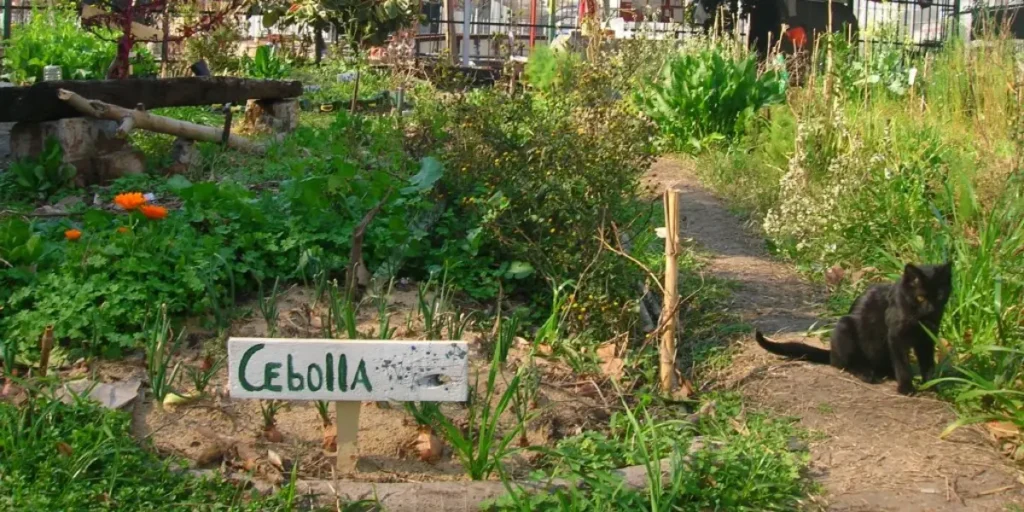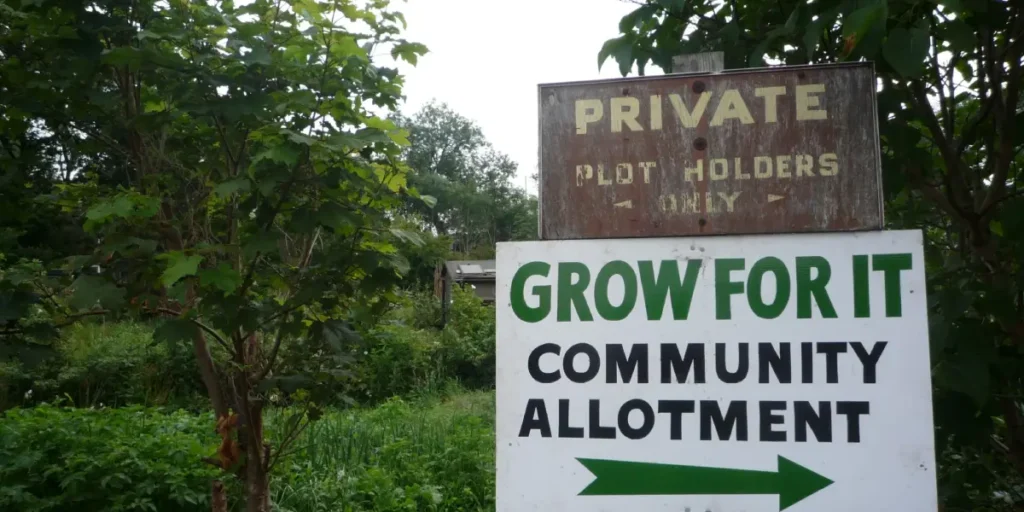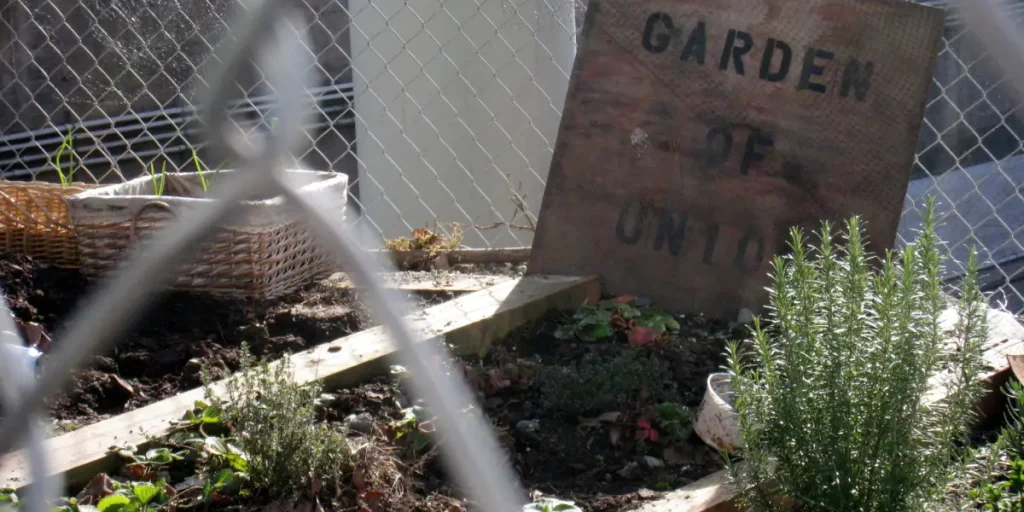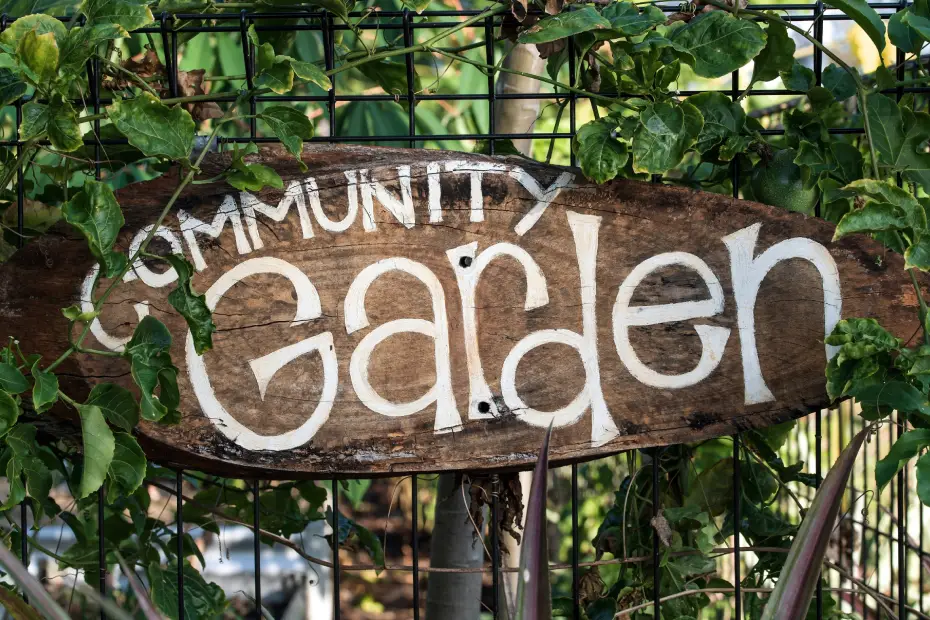Table of Contents
Introduction
Ignored pockets of land, or vacant lots, can be found in the middle of busy cities, surrounded by tall buildings and narrow streets. These abandoned areas, which are frequently tarnished by overgrown weeds and trash, can take away from the vitality of city life. But a new trend is repurposing these eyesores into flourishing community gardens, revitalizing deserted areas, and promoting sustainability, well-being, and a sense of community. This blog article will examine the possibilities of turning empty lots into an urban oasis and will go over the advantages, difficulties, and detailed procedures for developing thriving community gardens.
Understanding Vacant Lots
What are vacant lots?
To put it simply, vacant lots are undeveloped land tracts found in urban settings. They might be vast stretches of land or little, overlooked coves. These lots might have once included structures that were never developed or demolished, creating a gap in the urban fabric.
Why do vacant lots exist in urban areas?
The existence of vacant lots in cities can be attributed to several factors, including:
- Economic decline: Economic downturns may result in vacant lots as a result of company closures and property abandonment.
- Urban blight: Disregarding and insufficient funding may lead to the decline of residential areas, resulting in isolated areas of undeveloped land.
- Natural disasters: Destroyed or damaged properties might be left behind by fires, floods, or other natural catastrophes, leaving empty lots in their wake.
- Lack of development: In some cases, vacant lots may simply be the result of undeveloped land within a city.
The negative impacts of vacant lots on communities
Communities may suffer from vacant lots in a number of ways, affecting the social structure and the surrounding environment. Among the detrimental effects are:
- Eyesores: Neglected lots can develop into unattractive and uninviting environments by attracting graffiti, being overrun with weeds, and collecting trash.
- Crime and safety concerns: Unused land can be turned into hubs for illicit activities like drug usage, graffiti, and trash, endangering the safety of nearby inhabitants.
- Environmental issues: Urban wildlife habitat loss, water pollution, and soil erosion can all be caused by vacant lots.
- Reduced property values: The existence of empty lots can have a detrimental effect on the value of nearby properties, impeding investment and economic growth.
Key Takeaway: Urban landscapes frequently contain vacant lots, which are frequently the result of natural calamities, urban degradation, or economic collapse. It is worthwhile to change them into lively spaces because their existence can have a detrimental impact on communities in a number of ways.

The Power of Community Gardens
In the face of urban difficulties, community gardens stand as resilient and hopeful rays of light. These communal green areas have several advantages that go well beyond the availability of fresh vegetables.
What are community gardens?
Collaborative places such as community gardens allow people to grow vegetables, flowers, and plants together. They act as a gathering place where people from various backgrounds may interact with nature, exchange knowledge, and improve the quality of life in their neighborhood.
Different Types of Community Gardens
Community gardens come in various shapes and sizes, each catering to specific needs and interests:
- Allotment gardens: Each member of the group has a specific plot in these gardens, which they are in charge of cultivating.
- Neighborhood gardens: Residents of a specific neighborhood share these gardens, which fosters a sense of collective responsibility and ownership.
- School gardens: These gardens give kids practical learning opportunities about food, nutrition, and the environment by being included in school curricula.
- Therapeutic gardens: These healing gardens serve certain populations, such as those recuperating from disease or trauma, and are intended to foster healing and overall well-being.
The Benefits of Community Gardens
The positive impact of community gardens on individuals and communities is undeniable. Here’s a closer look at some of the key benefits:
- Access to fresh, healthy food: Fresh, wholesome produce can be found in community gardens, especially in places where access to wholesome food options is restricted. This may help with healthier diets and a decrease in food insecurity.
- Physical activity and exercise: Growing a garden encourages a healthy lifestyle, provides opportunities for exercise, and requires manual labor.
- Mental health benefits: Gardening and spending time in nature are excellent ways to improve mental health by lowering stress, anxiety, and depression.
- Community building and social connections: Community gardens encourage social interaction, uniting individuals of all ages and backgrounds and fostering a sense of belonging.
- Environmental benefits: Community gardens can boost biodiversity, lessen the impact of the urban heat island, and improve the quality of the air and soil.
- Educational opportunities: Gardens offer practical educational opportunities about flora, food production, and environmentally friendly methods.
- Economic development: By boosting property prices, generating employment opportunities, and assisting small companies, community gardens can boost regional economies.
The Transformative Impact: Case Study
A striking example of their potential is the conversion of an empty site in Boston’s Dudley neighborhood into a communal garden. Originally used as a landfill, the property is now home to a flourishing garden where locals raise flowers, vegetables, and herbs. Since it began to organize events, workshops, and get-togethers that promote social cohesion and a sense of pride and ownership, the garden has developed into a center of community activity.
This case study demonstrates how community gardens have a cascading effect. They improve the physical environment and foster a sense of empowerment, community, and hope in communities by reclaiming locations that have been neglected.
Key Takeaway: People and communities can benefit greatly from community gardens in many ways, including increased access to fresh food, more physical exercise, improved mental health, and strengthened social bonds. They have the ability to rehabilitate abandoned urban areas and promote a sense of stewardship and shared responsibility.

Turning Vacant Lots into Community Gardens: A Step-by-Step Guide
An empty lot can become a vibrant community garden with careful design, community involvement, and persistent work. Here is a detailed guide to assist you in navigating the procedure:
1. Assessing the Vacant Lot
Assessing the vacant land thoroughly is essential before starting the process of constructing a community garden. This entails assessing a number of factors:
- Size and location: The scale and possibilities of the garden will depend on the size of the lot. Furthermore, take into account the placement in relation to the neighborhood, making sure it is visible and accessible.
- Soil quality and environmental conditions: To determine the pH, fertility, and presence of any possible contaminants in the soil, test it. Don’t forget to take wind patterns, drainage, and sunshine exposure into account.
- Access to water and sunlight: Make sure there is a consistent supply of water available for irrigation on the lot. It also takes enough sunlight for plants to develop.
- Potential hazards or challenges: Determine the presence of any potential dangers, such as overhead electricity lines, toxic soil, or buried debris. Prior to moving further with the development of the garden, address these issues.
2. Building Community Support and Partnerships
A community garden needs the cooperation and strong support of its neighbors to succeed. Including the community from the start and forming alliances with pertinent parties are crucial.
- Identifying stakeholders and potential partners: Make contact with anybody you know who could be interested in helping with the garden project: locals, companies, schools, community organizations, and governmental bodies.
- Engaging the community and gathering input: To get suggestions and comments from the community for the garden, set up online forums, survey people, and host open houses.
- Forming a garden committee or organization: Create a formal management structure for the garden, such as a committee or organization with distinct roles and duties.
3. Planning and Design
Careful planning and design are crucial for creating a functional and aesthetically pleasing community garden.
- Developing a garden layout and design: Take into account the accessible requirements, the available space, and the desired amenities (such as raised beds, walkways, and seating places).
- Choosing suitable plants and crops: Choose plants that are compatible with the soil and climate of the area. Involve the community in choosing what to grow, taking dietary requirements and cultural preferences into account.
- Considering accessibility and inclusivity: Create a garden that is usable by individuals of all ages and skill levels. Include amenities such as raised beds, roomy walkways, and easily accessible seating sections.
- Incorporating sustainable practices: Put into practice eco-friendly techniques like composting, organic pest management, and water conservation.
4. Securing Funding and Resources
Both material and financial resources are needed to establish and maintain a community garden. Investigate different funding sources and make use of community resources.
- Exploring grant opportunities and fundraising options: There are financing options and research grants for community gardens. Plan activities to raise money, approach nearby companies for donations, or start a crowdsourcing initiative.
- Partnering with local businesses or organizations: Work together with companies, educational institutions, or neighborhood associations to obtain supplies, equipment, or labor donations.
- Utilizing volunteer labor and donated materials: Invite others in the community to help with the garden project by lending their time and expertise. Request donations of tools, plants, or building materials from nearby companies.
5. Preparing the Site and Planting
Once you have secured the necessary resources, it’s time to prepare the vacant lot for planting.
- Clearing the lot and removing debris: Clear the area of any rubbish, debris, or overgrown plants. Depending on how much cleanup needs to be done, this can call for expert aid.
- Improving soil quality and adding amendments: To increase soil fertility and drainage, test the soil and add additions like compost or organic waste.
- Installing irrigation systems and other infrastructure: Install irrigation systems to guarantee that plants receive enough water. Fences, walkways, and other infrastructure components should be installed.
- Planting seeds, seedlings, or transplants: Plant seeds, seedlings, or transplants at the right times, depending on your garden’s layout and the crops you’ve selected.
6. Maintaining and Sustaining the Garden
Creating a community garden is just the beginning. Ongoing maintenance and support are vital for its long-term success.
- Developing a maintenance plan and schedule: Establish a timetable for routine chores like harvesting, pruning, weeding, and watering. Give volunteers or gardeners tasks to complete.
- Organizing volunteer workdays and events: Plan regular workdays to engage the neighborhood in maintaining the garden. Plan gatherings such as plant sales, workshops, or potlucks to encourage community involvement and raise money.
- Addressing pest and disease issues: Keep an eye out for any indications of pests or illnesses on plants, and take the necessary organic pest control methods. Promote biodiversity to draw pollinators and beneficial insects.
- Ensuring ongoing funding and support: To maintain the garden’s operations and future growth, keep looking for financing sources and community support.
Overcoming Challenges and Ensuring Success
There are obstacles involved in converting abandoned lots into community gardens. However, these obstacles can be surmounted with cautious preparation and effective tactics.
Common challenges in creating community gardens
- Securing land access and ownership: It can be difficult to get ownership or authorization for the empty lot. It is imperative to effectively negotiate legal and administrative obstacles and develop unambiguous agreements with local authorities or landowners.
- Obtaining funding and resources: Getting enough money for supplies, equipment, and continuous upkeep might be difficult. Investigate different funding options and make use of community support.
- Dealing with vandalism and theft: Community gardens are regrettably susceptible to theft and damage. Use security measures to discourage unauthorized activity, such as lights, fencing, and surveillance cameras.
- Managing conflicts and disagreements: Disagreements and confrontations are likely to occur with any communal effort. To handle any problems that may arise, establish transparent decision-making procedures, clear communication routes, and dispute-resolution techniques.
- Maintaining long-term commitment and engagement: It might be difficult to maintain interest and involvement in the garden over time. To keep people involved, cultivate a sense of ownership, plan frequent events, and honor volunteers’ efforts.
Tips for overcoming these challenges
- Building strong community partnerships: Work together with neighborhood companies, associations, and governmental entities to maximize assets, knowledge, and assistance.
- Developing clear rules and guidelines: Give garden participants clear guidelines on how to use their plots, who is responsible for care, and how to resolve disputes.
- Utilizing technology and social media: To keep members informed, plan events, and interact with them, use social media and online channels.
- Celebrating successes and recognizing contributions: To keep enthusiasm and raise morale, recognize the volunteers’ hard work and dedication and celebrate accomplishments.
Inspiring Examples: Case Studies of Successful Community Gardens on Vacant Lots
There are countless instances of flourishing community gardens on abandoned properties all throughout the world, proving the movement’s revolutionary potential.
- The Michigan Urban Farming Initiative in Detroit, Michigan, has turned more than two acres of abandoned property into a flourishing urban farm that offers the locals fresh produce and educational possibilities.
- The Philadelphia Urban Gardening Project has assisted in the establishment of approximately 400 community gardens on vacant lots in Philadelphia, Pennsylvania, promoting environmental sustainability, community development, and food security.
- A once-vacant site in Berlin, Germany has been transformed into a bustling community garden and cultural hub by the Prinzessinnengärten initiative, displaying cutting-edge urban gardening methods and encouraging social cooperation.
These examples serve as inspiration for communities looking to reclaim their vacant lots and create thriving urban oases.

Conclusion
Urban concerns can be effectively and sustainably addressed by converting empty spaces into colorful community gardens. We can build green areas that strengthen community ties, improve health and wellbeing, and make the urban environment more resilient and sustainable by reclaiming abandoned spaces.
If you have a strong desire to improve your neighborhood, you might choose to create or participate in a community garden project. The benefits to individuals and our cities’ overall well-being are tremendous.
Recall that creating urban oasis from empty land requires teamwork. Together, we can turn abandoned areas into vibrant centers of beauty, vitality, and community spirit. Together, let’s plant the seeds of change and grow our cities’ future into something greener and healthier.



